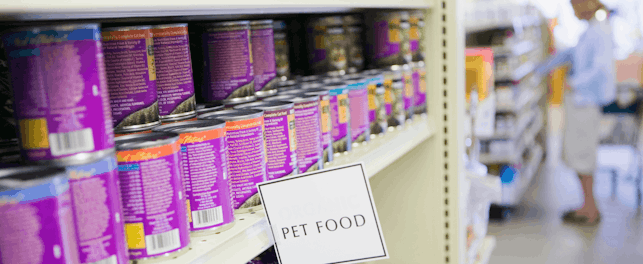The COVID-19 pandemic has affected all corners of the world. With governments bringing in restrictions to combat the disease, what should businesses consider when navigating COVID-19?
Challenges for All Businesses
The primary challenge is obvious – can we afford to cover our costs? While variable costs may go down, fixed costs do not. In recognition of this, some governments have passed stimulus programs to assist businesses with these challenges.
Employees need to remain healthy for a business to continue. This means, for example, introducing distancing measures, changing personal protective equipment (PPE) requirements, regularly wiping down equipment and surfaces, limiting visitors, and changing delivery protocols. Everyone must learn new protocols and be encouraged to report suspected or confirmed illnesses in friends and family, if they have been in recent contact and require quarantining.
Companies also need to review and adjust their contingency plans to ensure they function optimally during this emergency. Existing plans for many organizations will be centered around catastrophic single events but this situation is very different with most of the population remaining healthy and therefore able to work.
It must be accepted, however, that employees are likely to be exposed to the virus. When this happens, they must be quarantined to stop the virus spreading through the organization. If an employee’s work allows work from home, this is an option if they feel well enough. Where the infection has affected so many workers that normal operations can no longer continue, managers will need to execute a contingency plan to either refer customers or reduce service provision. It is imperative that staff do not return to work when they are still ill.
These decisions can be very difficult for business leaders. The decision to stay open or close can result in life or death, and the effects on the long-term viability of the business can be enormous.
Businesses may also face supply shortages. Contingency plans should be reviewed to determine if alternate sources or substitutes could be used when key supplies are no longer available.
Despite effective contingency plans it is possible many businesses will experience disruption to their services. Leaders then need to consider how they should respond. If turn-around-times can no longer be met, or the full range of services can no longer be offered, what should be relaxed first? If contingency plans fail and operations are stretched beyond capacity, what should the business do?
These are challenging questions. This is a time where discussions with employees and customers need to happen so that a way forward can be arranged.
Challenges for Food Manufacturers and Suppliers
In addition to the issues that will affect all businesses, food manufacturers and their suppliers will have additional factors to consider. While restaurants and bars may be closed, people are still eating and so safe, high quality food must still be produced, shipped, and provided to the customer.
Food safety is still the primary concern of all manufacturers, but this should now encompass measures to stop the coronavirus. There is currently no evidence that the virus has been transmitted via food or food packaging, but there is evidence that it can remain viable on certain surfaces for a longer period of time. Normal food handling procedures should be sufficient to combat COVID-19, so long as social distancing and other measures are followed.
As with any business at this time, it is critical to keep personnel healthy. This means monitoring habits and ensuring hygiene protocols are followed – for example, glove changes, keeping hands away from the face, and regular handwashing. If an employee develops a cough or any other symptom of the virus, it may be time to send them home. One infected employee could spread the virus to all employees within two weeks, forcing a business to shut.
Food operatives also need to consider the importance of their product. Customers will be relying on their output and therefore any contingency plan must take into account the reduction in services from key vendors.
A food operatives contingency plan should address the following questions:
- What do I do if an ingredient supplier cannot provide the amounts I need? What if they close completely?
- What if my laboratory is no longer able to meet my required TAT? What if they cannot provide all the services I need?
- How do I handle transport disruptions? Can I still get my product to market?
- What person-to-person interactions can I change to reduce contact? Can these be done remotely?
GFSI
In general, GFSI has confirmed that extensions for certifications is the responsibility of the program owner who can request a risk assessment based on the certification history and ability of the certified company to maintain practices and processes guaranteed by their certificate. Certified organizations may be asked to provide information to their Certification Body to support this risk assessment.
Food Safety Management Systems
For food safety management systems, the following areas should be updated and readily available for your upcoming audit:
- Updated policies surrounding management of crisis
- Risk assessment
- Emergency management and contingency plans
- Personnel documentation and records
- Purchasing
- Control of nonconformity products
- Subcontracting/supplier control
- Deviations
- Change control
- Internal audits
- Documentation and records
- Complaints and recalls
Other ISO based management schemes e.g., quality, environmental, are also allowed either full or partial remote audit according to IAF CABAC COVID-19 Feb 2020; IAF MD4; IAF MD5 and based upon Certification Body’s specific procedure.
What Next?
This global pandemic will eventually stop but there will be no magic day when everything is suddenly back to normal. This will be a phased return to work. Society needs to remain vigilant in order to retain low infection rates, otherwise there is a chance the lockdown will be reinstated.
Businesses must consider what their roadmap back to normality will look like. How will they restart what has stopped? For example, restaurant kitchens that have sat idle for weeks will need deep cleaning. How will they ramp-up what has slowed down?
These are good questions but returning to work will require more than simply cleaning and restocking. If we look at Europe, we can see various examples of what the new ‘normal’ may look like. For example, Austria is planning to reopen restaurants on May 15, but waiters will be required to wear PPE. Other measures are likely to include limits on table spacing and the number of people permitted to dine together, as well as recommendations on improving ventilation.
Every business leader must consider and address these regulations and the requirements that are unique to their organization. There can be no standardized return to work procedure because each business will be different. The primary concern for all businesses must remain the safety of their staff and customers.
Whatever plan a business decides upon as they return to ‘normal’, it must be flexible. The plan must allow for some employees to still be sick, while others may be anxious about reconnecting with co-workers. There may also be anxiety associated with different groups, as those that have continued to work outside of the home during lockdown come into contact with those that were previously quarantined. This is all perfectly understandable and should be considered in the roadmap. The key is continuous communication with stakeholders to help them feel at ease with each set of changes.
The roadmap should also consider ongoing safety during, and after, the phased in return to work. Business owners will need to monitor their premises for the presence of SARS-CoV2. Regular swabbing and testing should become part of any hygiene monitoring program. This will give owners the advanced notice they need to not only protect their staff and customers and reduce the possibility of high infection rates returning, but it will also help to mitigate the risk of further costly disruptions to the company.
The COVID-19 pandemic is having a seismic effect on businesses around the world, but there are lessons that can be learnt from it. This is an opportunity to fine tune business continuity and contingency plans, but it is also a chance to define what things are truly important and find new ways in which to grow.
For the complete range of SGS services and support, visit SGS Food Safety.

The COVID-19 pandemic is unprecedented in the modern era, posing unforeseen challenges to business continuity. At SGS, we are working hard to meet those challenges and support international efforts to beat COVID-19.



